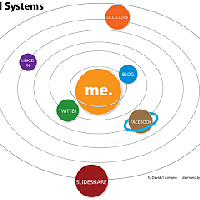Home
About Us
Page 2
Ever since it's conception, the program has been using random telephone calls to conduct surveys and ask questions regarding different health concerns. However, with the significant rise of cellphone users in the United States, the collection of data through telephone calls have proven to become greatly inefficient.
|
|
For this reason, the CDC has decided to conduct the program's survey's through cellphone calls and e-mails, apart from the traditional telephone call method.
In an attempt to make the data collection process more revolutionary and successful, the funding opportunity in focus seeks to maintain and expand the process through:
a) The application of specific surveillance techniques through telephones and multimode survey methodologies focusing on the occurrence and prevention of chronic injuries and diseases.
b) The collation, analysis, and the dissemination of the data obtained form the surveys to State categorical programs in order to enable them to utilize the data in the process of evaluating certain trends, directing program planning, setting program priorities, developing policies, and tapping into target populations.
The CDC requires potential grant applicants to submit proposals that would outline the strategies and procedures that will be employed in order to realize the program's objectives. In this regard, the CDC is set to administer a total of $45,000,000 to approximately 53 grant awardees under the Behavioral Risk Factor Surveillance System Program.
The institutions and organizations that will be considered eligible to participate in this program are the following:
a) State governments of the United States
b) Bona Fide Agents from US State Governments including representatives from the District of Columbia, the Commonwealth of Puerto Rico, and the Virgin Islands.
Behavioral Risk Factor Surveillance System
Back to Page 1
About The Author Michael Saunders is an editor of TopGovernmentGrants.com one the the most comprehensive Websites offering information on government grants and federal government programs. He also maintains Websites providing resources on artist grants and children grants. |
Additional Resources
category - Health Grants
OMICS Technologies For Predictive Modeling of Infectious Diseases Program
Economic Studies Ancillary to Completed or Ongoing Health Care Delivery and Financing Pilots, Demonstrations, and Other Experiments
Agriculture and Food Research Initiative: National Institute of Food and Agriculture Fellowships Grant Program
Child Health Research Career Development Award Program
Follow @topgovtgrant
Social Entrepreneurship
Spotlight
Social Enterprise Version 2.0

Midsize businesses are tapping into the social business market because large companies do not need the help of start-ups to create a “social technology stack.” But a social business stack cannot generate revenue by itself.
